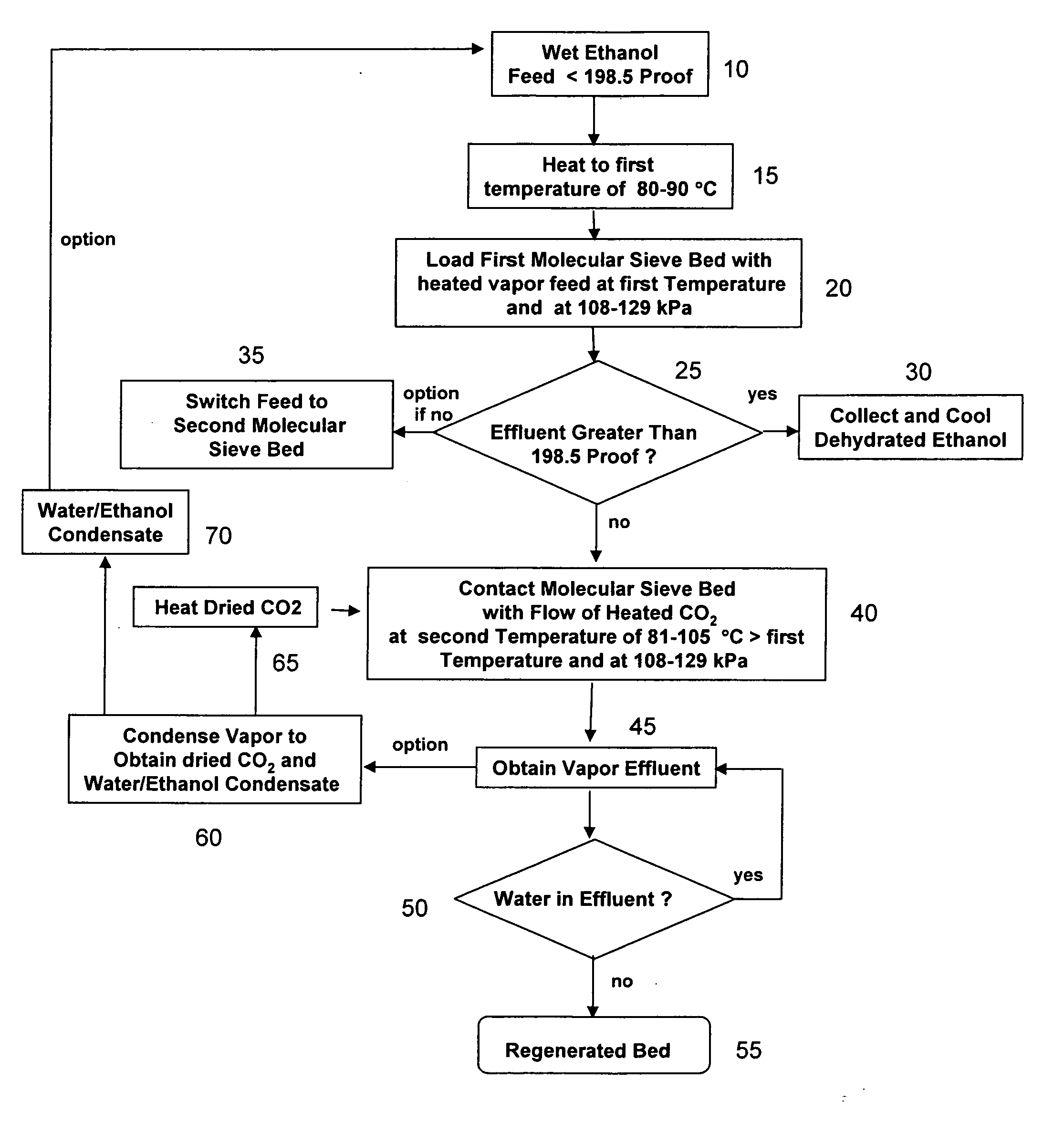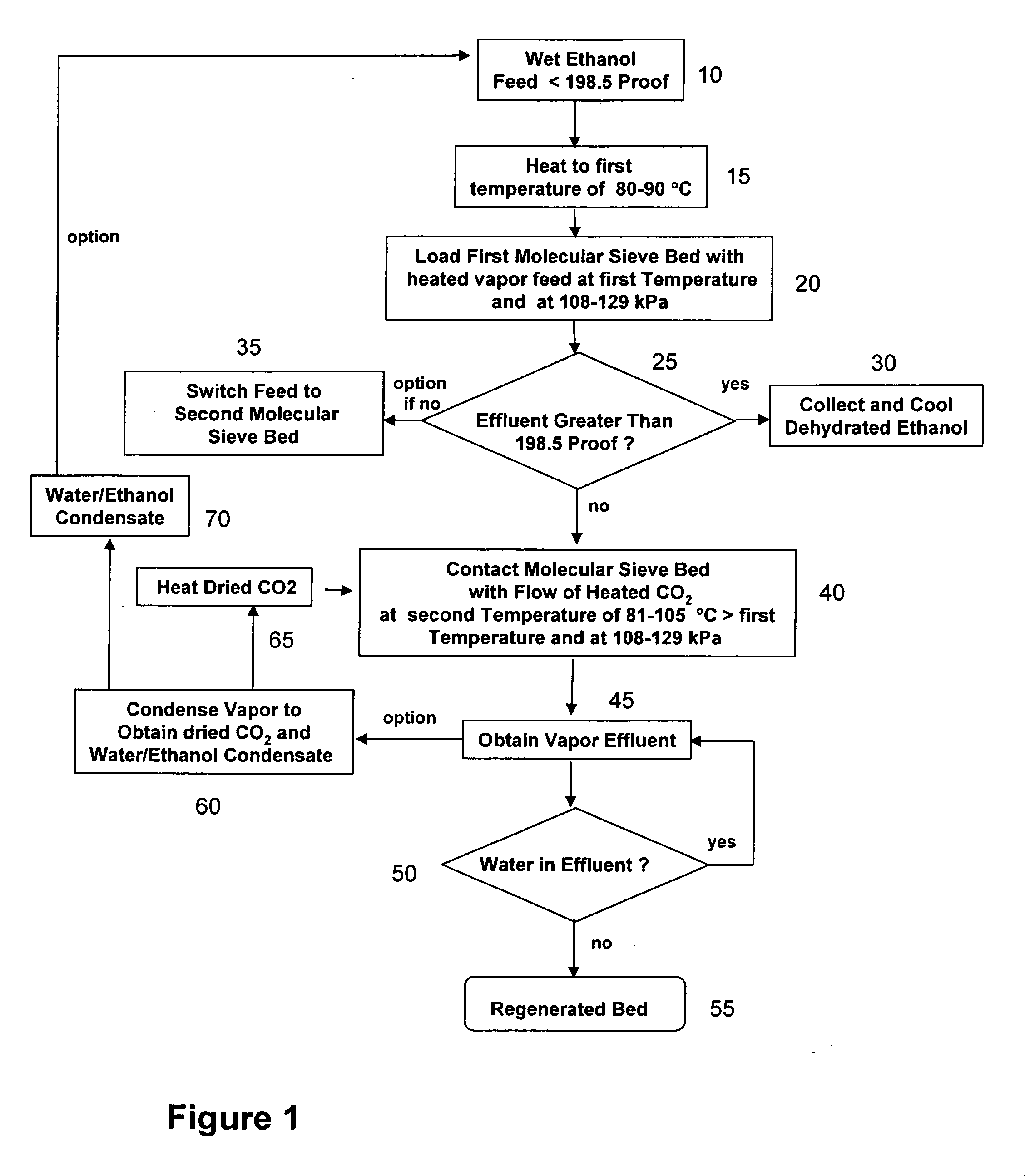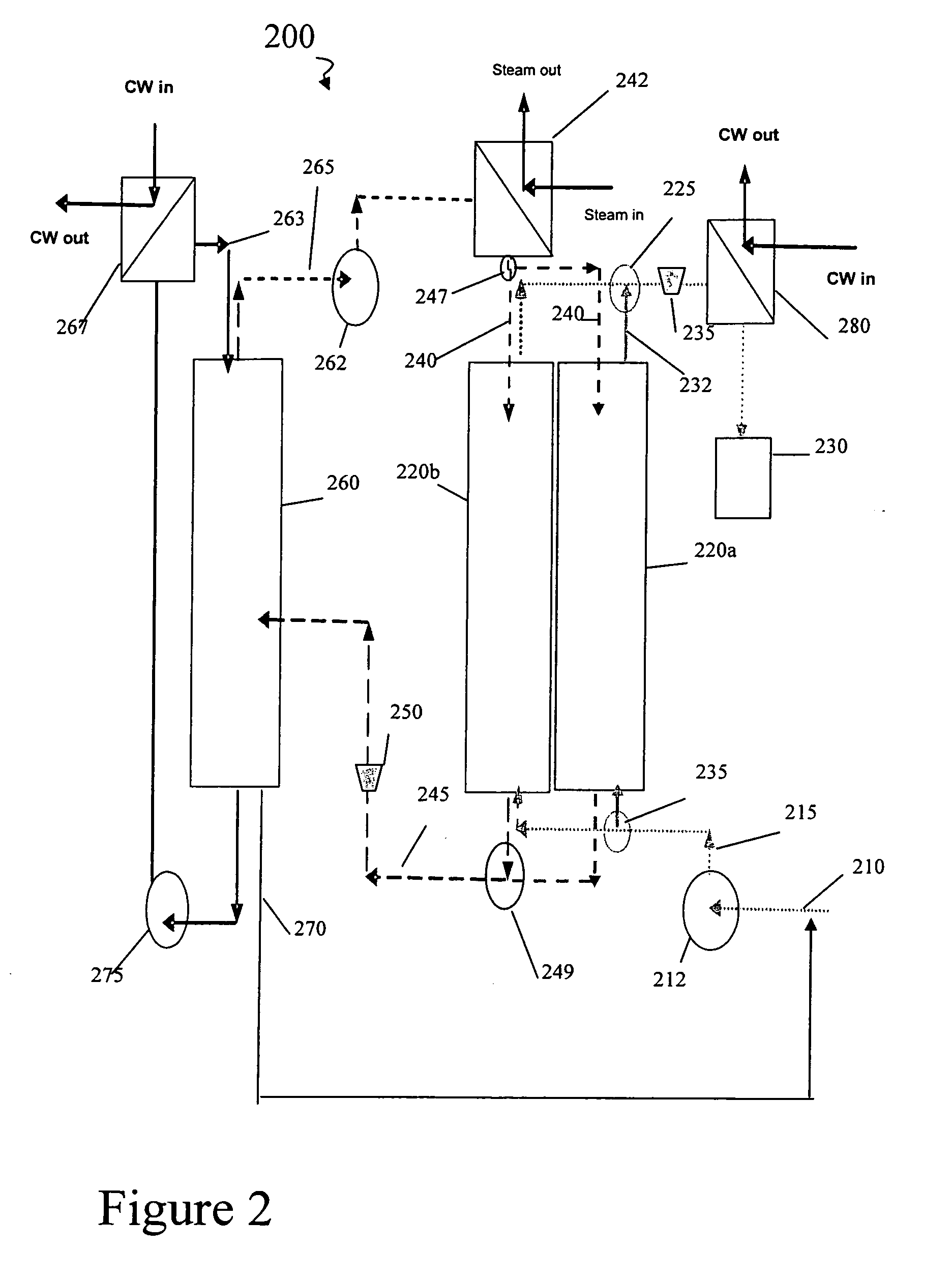Regenerating molecular sieve absorbents used for alcohol dehydration
a molecular sieve and absorbent technology, applied in the field of improvement, can solve the problems of large amount of undesirable water contamination in anhydrous ethanol, difficult to separate the components by distillation, and formation of unwanted products, so as to facilitate the removal of water retained, reduce the amount of solvent, and reduce the energy cost of regeneration
- Summary
- Abstract
- Description
- Claims
- Application Information
AI Technical Summary
Benefits of technology
Problems solved by technology
Method used
Image
Examples
example 1
Molecular Sieve Screening for Dehydration ° Capacity
[0067] Four different molecular sieve absorbents were studied. Many of the initial tests involved regenerating the molecular sieves with dry CO2. The molecular sieve absorbents tested were: UOP mole sieve; Grace Davison 564ET 3A; Sphinx Type Z Grade 3A-8; Zeochem Z3-03. All absorbents were 4×8 mesh spherical beads. Jacketed glass columns were used to hold the absorbents.
[0068] Column size is: 25 mm inside diameter×600 mm length
[0069] The system was operated as follows for each cycle: the feed cycle was run for 8.25 min and regeneration cycle for 13.75 min, respectively. The feed ethanol (92%(v / v)), was vaporized by pumping through stainless steel tubes, submerged in a heated oil bath and applied to the bed at a temperature about 85° C. The product ethanol was recovered by condensing discharge vapor in a heat exchanger. ° Composite samples of this condensed ethanol were tested for percent moisture.
[0070] Failure of the molecular...
example 2
Adsorbent Bed Regeneration with Saturated CO2
[0072] To simulate industrial conditions for the ethanol dehydration process, the molecular sieves and corn grit beds were regenerated with saturated CO2. The performance of the bed regeneration improved with decreasing saturation temperature of the CO2 regeneration gas, i.e., the lower the CO2 temperature the more water that could be removed from the ethanol. ° Comparison data of various molecular sieves, Envirostrip and corn grits (regenerated with saturated CO2) and using an ethanol feed of 184 proof are shown in Table 3. These tests used identical columns and followed the test protocol used for Example 1, Table 1. Product proof failure, i.e. when percent moisture content exceeded 0.75 %(v / v) is indicated in bold. The plot shown in FIG. 5 demonstrates the increased capacity of the molecular sieve.
[0073] CO2 is a gas that is generated during the fermentation of ethanol, which makes it a readily available, non-flammable gas, perfectly ...
example 3
CO2 Regeneration of Extended Length Molecular Sieve Beds with Dried Gas
[0076] Columns were assembled to achieve a seven foot (2.1 meter) adsorbent bed depth to more accurately model an industrial scale adsorbent bed.
[0077] A typical Ethanol Dehydration cycle in an industrial plant might be 8.25 minutes ethanol feed and about 13.75 minutes carbon dioxide regeneration cycle. Pilot columns were operated around-the-clock using the same cycle times. A breakthrough test was used to determine / compare the dehydrating capacity.
[0078] Since equipment had been operating around-the-clock, before the Breakthrough Test, absorbent was regenerated for 30-90 minutes. Regenerating the absorbent by passing heated CO2 at a temperature of about 96° C. over the bed in reverse direction to feed ethanol, through the molecular sieve to remove moisture. This is the extended regeneration cycle.
[0079] A breakthrough test uses a constant feed rate, of 92% v / v ethyl alcohol, to the absorbent. Individual prod...
PUM
| Property | Measurement | Unit |
|---|---|---|
| Temperature | aaaaa | aaaaa |
| Temperature | aaaaa | aaaaa |
| Temperature | aaaaa | aaaaa |
Abstract
Description
Claims
Application Information
 Login to View More
Login to View More - R&D
- Intellectual Property
- Life Sciences
- Materials
- Tech Scout
- Unparalleled Data Quality
- Higher Quality Content
- 60% Fewer Hallucinations
Browse by: Latest US Patents, China's latest patents, Technical Efficacy Thesaurus, Application Domain, Technology Topic, Popular Technical Reports.
© 2025 PatSnap. All rights reserved.Legal|Privacy policy|Modern Slavery Act Transparency Statement|Sitemap|About US| Contact US: help@patsnap.com



